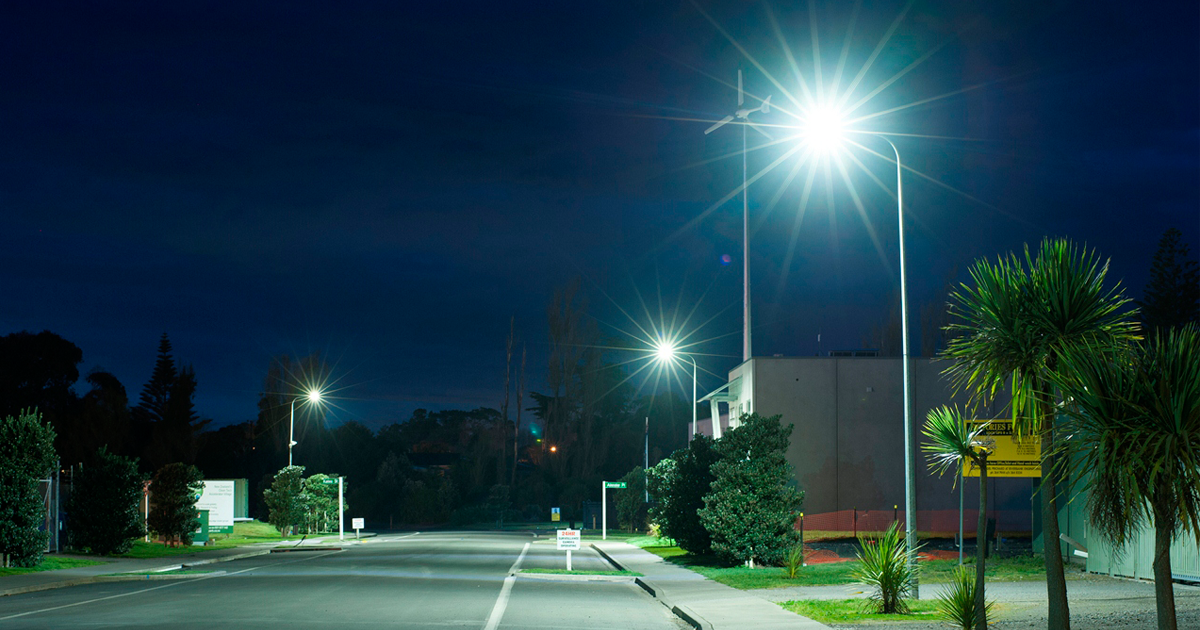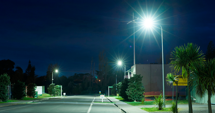- Dog and animal management
- Cemeteries
- Fees and charges
- Reusing, recycling, and waste
- Roads, transport and parking
- Business licences and permits
- Waters
- Noise control
- Grants and funding
- Council facilities for hire
- Council properties
Streetlighting
 Council looks after more than 5,000 streetlights around the district. We inspect these at night each month, to check they're working properly and so any faulty lights can be fixed.
Council looks after more than 5,000 streetlights around the district. We inspect these at night each month, to check they're working properly and so any faulty lights can be fixed.
Lights can fail in between inspections though, and we appreciate you letting us know if you notice any lights not working.
- If three or more lights in a row are out, it is a network fault and queries should go to Electra.
- If individual streetlights are not working, contact us.
New streetlight
To request a new streetlight, please contact us.
Shining in window
To report a streetlight shining into your house window, please contact us.
Streetlights in retirement villages
All streetlights in retirement villages are private and are their responsibility. Please report any issues to the village management.
 We’ve recently finished converting about 4,700 of the district’s 4,786 sodium vapour streetlights with new white light-emitting diode (LED) lights.
We’ve recently finished converting about 4,700 of the district’s 4,786 sodium vapour streetlights with new white light-emitting diode (LED) lights.
The conversion was made possible as a result of a one-off Government subsidy from the NZ Transport Agency, which contributed 85 per cent of the estimated $2.2 million cost to convert to LED lights.
LED lights offer significant benefits. They provide better illumination and draw more than 50 per cent less power than sodium vapour streetlights. They also have a much longer shelf life, around 20 years compared to four to five years for a sodium vapour streetlight, which means they don’t need to be replaced as often and the cost to run and maintain street lighting is reduced.
Conversion to LED lights
LED lights provide better illumination and draw more than 50 percent less power than sodium vapour streetlights. They also have a much longer shelf life, around 20 years compared to four to five years for a sodium vapour streetlights, which means they don’t need to be replaced as often and the cost to run and maintain street lighting is reduced.
Brightness
LED lights omit a white light which can appear much brighter than the dull orange light you get from traditional streetlights. The light spill will be directed downwards to the road and footpath to reduce light pollution.
Change in colour
LED lights omit a white light which can appear brighter than the dull orange light you get from traditional streetlights. The contractors carried out light intensity testing before and after installation to ensure the light intensity was within acceptable levels and complied with the NZ Standard for road lighting.
Adverse effects
As with any street lighting, light pollution can be an issue if appropriate steps are not taken to mitigate possible adverse effects. The light fixtures we use are from the NZ Transport Agency approved list and meet their standard for colour corrected temperature and intensity.
There are things we can do to mitigate light pollution if it’s a problem. For example a clear or blacked out, dome-shaped cover can be fitted to control the light spill into people’s property. Please get in touch with us if you have any questions or concerns.
Cost
The conversion to LED streetlights was made possible as a result of a one-off Government subsidy. The NZ Transport Agency contributed 85 percent of the $2.2 million cost to convert to LED lights.
Replacement
Almost all our streetlights have been replaced – there are a few exceptions, such as in parks and recreation areas.